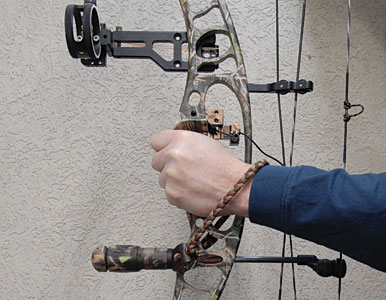Update Your Archery Video Game: Choosing the Perfect Compound Bow Stabilizer
Optimizing Your Archery Efficiency With the Right Substance Bow Stabilizer: a Detailed Review
In the world of consistency, archery and precision are extremely important to attaining optimum efficiency. One often-overlooked yet critical part in boosting precision is the compound bow stabilizer. This simple device plays a significant duty in steadying your purpose, lowering bow torque, and taking in vibrations. The efficiency of a stabilizer hinges on various variables, consisting of placement, weight, and layout. By comprehending the nuances of choose and enhancing a compound bow stabilizer, archers can adjust their devices to boost their shooting experience to brand-new degrees of efficiency and control.
Value of Bow Stabilizers in Archery

Additionally, bow stabilizers assist in stabilizing the weight distribution of the bow, which can enhance the archer's security while aiming and firing. By including weight to the front of the bow, stabilizers can decrease the quantity of torque experienced upon release, causing a smoother and much more controlled shot - compound bow stabilizer. This weight distribution also helps in holding the bow consistent for a longer duration, permitting the archer to aim a lot more properly
Types of Compound Bow Stabilizers
When taking into consideration the various kinds of substance bow stabilizers available, it is important to recognize their distinct features and functions to figure out one of the most suitable option for maximizing archery performance. The most typical kinds of substance bow stabilizers consist of sidebar stabilizers, front stabilizers, and back stabilizers. Sidebar stabilizers connect to the sides of the riser and help in balancing the bow during the aiming process. Front stabilizers, likewise referred to as lengthy poles, are connected to the front of the riser and help in soaking up and reducing any vibrations triggered by the release of the arrow, thus improving accuracy. Back stabilizers, also called rear stabilizers, are installed to the back of the bow and help in reversing the weight of various other accessories, leading to enhanced stability and consistent aiming. Furthermore, some stabilizers include adjustable weights that allow archers to fine-tune the balance and feeling of their bows according to their choices, making them flexible choices for archery lovers of all levels.
Variables to Think About When Choosing
In reviewing compound bow stabilizers, understanding the distinct features and functions of each type is essential for making a notified decision on the most suitable option to enhance archery performance. When choosing a stabilizer, one have to take into consideration the weight of the stabilizer itself. By carefully evaluating these factors, archers can pick a substance bow stabilizer that lines up with their shooting style and maximizes their overall efficiency on the archery array.
Installment and Change Tips
For ideal efficiency and precision in archery, understanding the setup and adjustment of your bow why not try these out stabilizer is crucial. Appropriate installment begins with affixing the stabilizer to the bow's riser, ensuring it is strongly protected.
When readjusting the stabilizer, begin with tiny step-by-step adjustments instead than radical changes. Pay interest to just how the bow responds to changes in stabilizer settings and make modifications accordingly. Routinely examine redirected here the stabilizer's rigidity and general condition to ensure it proceeds to function efficiently.
Upkeep and Treatment Standards

When not in use,It is likewise important to save your bow with the stabilizer in a safe and secure location. compound bow stabilizer. Stay clear of leaving it in extreme temperature levels or revealed to guide sunshine for prolonged periods, as this can cause damages to the stabilizer. Occasionally inspect the stabilizer's positioning to ensure it is still properly positioned on your bow. Following these maintenance and care standards will help you obtain one of the most out of your bow stabilizer and improve your overall archery efficiency.
Verdict
To conclude, selecting the ideal compound bow stabilizer is crucial for optimizing archery efficiency. Comprehending the significance, types, aspects to take into consideration, installment and change suggestions, in addition to upkeep and treatment guidelines can greatly impact one's precision and uniformity in shooting. By choosing a useful site stabilizer that matches private needs and preferences, archers can enhance their overall efficiency and accomplish better results on the array or in competitors.
Bow stabilizers play an essential duty in enhancing an archer's accuracy and consistency by reducing vibrations and stabilizing the bow during the launch of an arrow - compound bow stabilizer.Additionally, bow stabilizers help in balancing the weight circulation of the bow, which can enhance the archer's security while firing and intending. The most typical kinds of compound bow stabilizers include sidebar stabilizers, front stabilizers, and back stabilizers. Back stabilizers, also called rear stabilizers, are placed to the back of the bow and aid in counterbalancing the weight of various other accessories, resulting in boosted security and consistent intending. When choosing a stabilizer, one should take into consideration the weight of the stabilizer itself